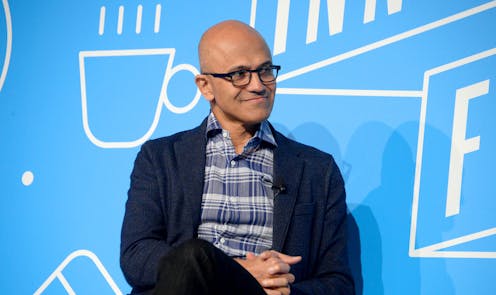On the first-ever India Giving Day, the highest-earning ethnic group in the US gets a chance to step
Indian American donors will have an opportunity to collectively fund improvements in education, health care and gender equality in India on March 2, 2023.

Members of the Indian diaspora living in the U.S. are being urged to step up and channel money back to the homeland during a 24-hour charitable drive.
On March 2, 2023, the first India Giving Day will take place. The plan is to encourage U.S.-based donors, especially the nation’s 2.7 million Indian immigrants and the roughly 1.3 million U.S.-born Americans of Indian origin, to give to Indian causes in unison.
As a scholar interested in the role that charitable donations play in international development, I expect this fundraising drive to raise millions of dollars for India-supporting nonprofits.
The campaign’s organizers will raise money to fund projects that will improve education, health care and gender equality and meet other important needs in a country with 228.9 million people living in poverty, according to the 2022 Global Multidimensional Poverty Index – more than anywhere else in the world.
A nonprofit alliance
The India Philanthropy Alliance, a coalition of 14 U.S. nonprofits that fund development and humanitarian projects in India, is coordinating the event. Its members already raise a total of almost US$60 million annually in the U.S. Their goal is to amass more funding collectively by holding an annual single-day push.
Although the alliance will welcome donations from anywhere and anyone, its main focus is to encourage Indian Americans and Indian immigrants who live in the U.S. to support its members, such as CRY America, a children’s rights nonprofit, and Sehgal Foundation, an organization promoting rural development in India.
Giving days, 24-hour campaigns to raise awareness and donations for specific organizations and causes, have become more common in the U.S. over the past 15 years. There are many for schools, hospitals and many other kinds of organizations but Giving Tuesday is the most popular. Held on the first Tuesday after Thanksgiving, it raised over $3 billion for a wide array of causes in 2022.
All told, Indian Americans give an estimated $1 billion annually to charity.
There is the potential for even higher sums being raised from the many very rich Indian Americans – a long list that includes actress Mindy Kaling, Alphabet CEO Sundar Pichai, economist Amartya Sen, Microsoft CEO and Chairman Satya Nadella – and the entire Indian American community.
That’s because Indian Americans are the nation’s highest-earning ethnic group, and yet they give away a smaller share of their income than the U.S. average.
The alliance aims to see Indian American giving triple to $3 billion, with some of that total funding development and humanitarian projects in India. India’s government has also been vocal about wanting Indian Americans to contribute more toward India’s development.
Giving to the homeland
India Giving Day is an example of diaspora philanthropy – giving back to one’s homeland, often by pooling resources with others who share the same heritage. This giving can be in the form of money, or time spent volunteering for a cause. It has also been called homeland philanthropy, migrant philanthropy and refugee philanthropy.
A common way that immigrants and people whose parents or grandparents immigrated to the U.S. send money back to their homelands is through remittances – dispatching money across international lines to family and friends to help them get by. Total remittances globally grew 5% in 2022 to $626 billion. The flows to India increased much more sharply, shooting up 12% to $100 billion.
Diaspora philanthropy can be characterized as collective remittances for development and humanitarian projects. Diaspora communities are motivated to collectively give because of their shared identity and sense of responsibility to their countries of origin.
There is currently no way to estimate diaspora philanthropy’s scale. One reason for that is that funding is channeled through countless intermediaries, from diaspora-led organizations and hometown associations to universities.
While India is of one of the world’s fastest-growing economies, it also has daunting needs when it comes to addressing poverty in its lowest-income regions.
For that reason, I believe any drive to encourage the flow of charitable dollars to India is to be welcomed. The cash raised through the India Giving Day campaign will help fund an array of projects, such as nutritional programs for children and expectant mothers, educational centers for child laborers and efforts to supply sewing machines for women’s cooperatives.
Susan Appe does not work for, consult, own shares in or receive funding from any company or organisation that would benefit from this article, and has disclosed no relevant affiliations beyond their academic appointment.
Read These Next
From truce in the trenches to cocktails at the consulate: How Christmas diplomacy seeks to exploit s
World leaders like to talk up peace at Christmastime. But alongside the tales of seasonal breaks in…
As DOJ begins to release Epstein files, his many victims deserve more attention than the powerful me
Powerful men connected to Jeffrey Epstein are named, dissected and speculated about. The survivors,…
How to reduce gift-giving stress with your kids – a child psychologist’s tips for making magic and a
Depending on family circumstances and a child’s personality type, gift giving runs the gamut of fun…






